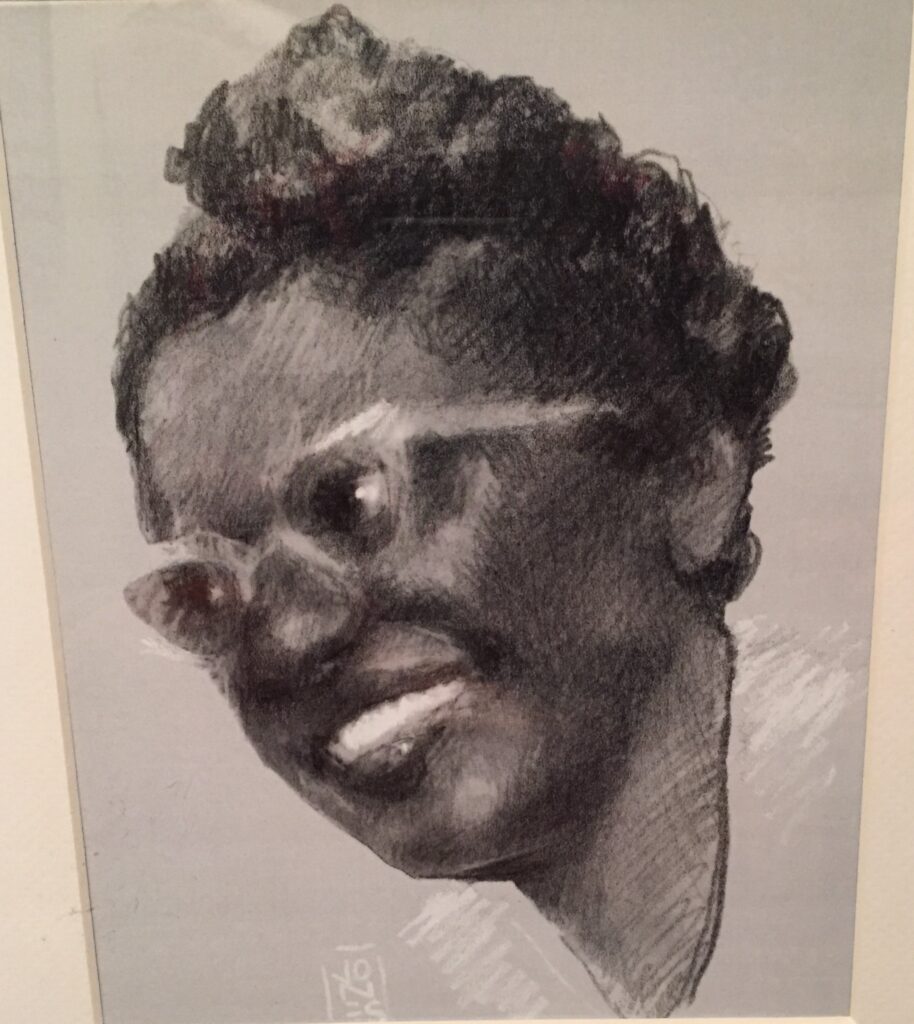Marietta Cooper Bryant was an Arizona educator and civil rights activist best known for fighting for her right to teach in integrated classrooms prior to the 1954 landmark Supreme Court case, Brown v. Board of Education of Topeka.
Born Marietta Cooper on June 28, 1911, in Iconium, Oklahoma, not much is known about her early life. According to historical records, it is likely that as a child, Cooper would have attended Lincoln School, a local school for colored children, graduating in 1934. Documents reveal that she earned a Bachelor of Science in home economics in 1939 from Oklahoma’s Colored Agricultural and Normal University, which became Langston University in 1941.
While at Langston, Daisy Nelson Moore, Cooper’s friend, introduced her to Dave Bryant. They wed while Moore was living and working as an elementary school teacher in the Globe area of Arizona. She told her newly-married friend about teaching opportunities there. After World War II, Marietta and Dave moved to nearby Miami, Arizona. By 1946, Marietta had obtained an Arizona teaching certificate and was offered a position at the Thomas Jefferson School for colored children in the Globe-Miami district.
Segregation in Arizona schools was legal since 1909. By the 1930s, a strong and dedicated effort to desegregate public schools spread in Logan County. Lawyers from various organizations, including Jesuit Legal Counsel and the local NAACP office, filed lawsuits that would permit teachers to work in desegregated district schools. Meanwhile, nationally, peaceful protests led by boys and girls sometimes ended with useful conversations and changes but were often met with violence and arrests.
Although Bryant was a full-time tenured teacher with a contract, newly-passed legislation created a loophole. Teachers were initially protected by Arizona’s Tenure Law that stated teachers could not be unfairly dismissed from positions. However, the law also stated that dismissals could be put forth if there was “good and just cause.” On March 15, 1951, a desegregation law was signed by then-Arizona Gov. Howard Pyle. Only three days before, both Marietta and Moore were told that their contracts would not be renewed. Colored children were being integrated into white public schools, but colored teachers were not being hired to teach in those schools.
Marietta and Moore requested hearings with their respective school boards to argue against the unjust terminations. Their appeals were denied. The teachers sought the assistance of the Arizona Education Association, which hired legal representation for the teachers. The Gila County Superior Court ruled in favor of the teachers. The school boards appealed but lost. Both teachers were reinstated in 1952 and received a year’s back pay. Marietta took a position teaching penmanship to grades 4-8 at the Bullion Plaza Elementary School in Miami, Arizona, where she remained until she retired.
Marietta died on October 14, 2004, in Stockton, California at the age of 91. She was inducted into the Arizona Women’s Hall of Fame posthumously in 2015.
Do you find this information helpful? A small donation would help us keep this available to all. Forego a bottle of soda and donate its cost to us for the information you just learned, and feel good about helping to make it available to everyone.
BlackPast.org is a 501(c)(3) non-profit and our EIN is 26-1625373. Your donation is fully tax-deductible.
Rachael Leingang, “Supreme Court Justice Sandra Day O’Connor, singer Linda Ronstadt among influential women on Arizona list.” Usatoday.com, August 13, 2020, https://www.usatoday.com/in-depth/life/women-of-the-century/2020/08/13/arizona-history-women-linda-ronstadt-gabrielle-giffords-voting-rights/5019133002/; Libby Rooney, “A lesson in Integration and Integrity, Remembering Daisy Moore and Marietta Bryant,” Globemiamitimes.com, July 24, 2019, https://www.globemiamitimes.com/a-lesson-in-integration-and-integrity-remembering-daisy-moore-marietta-bryant/
Your email address will not be published.

